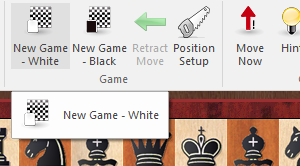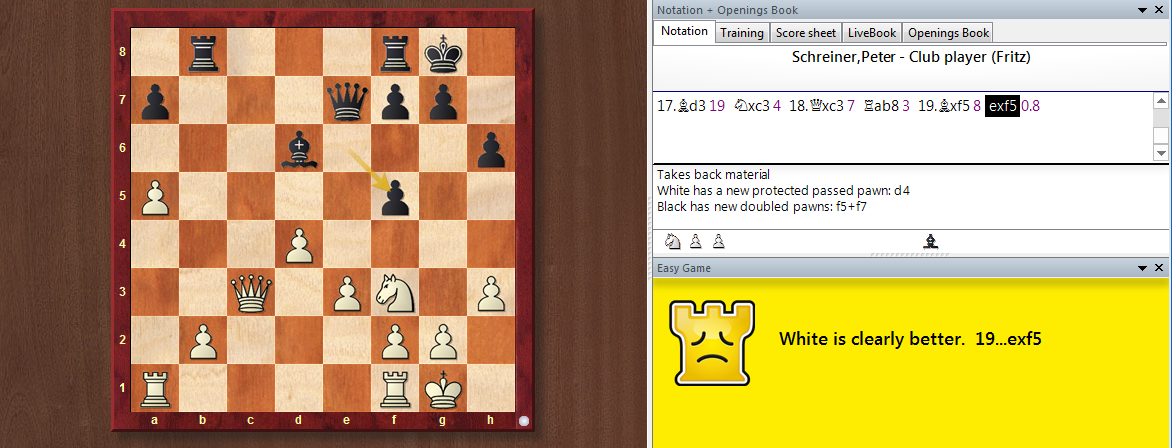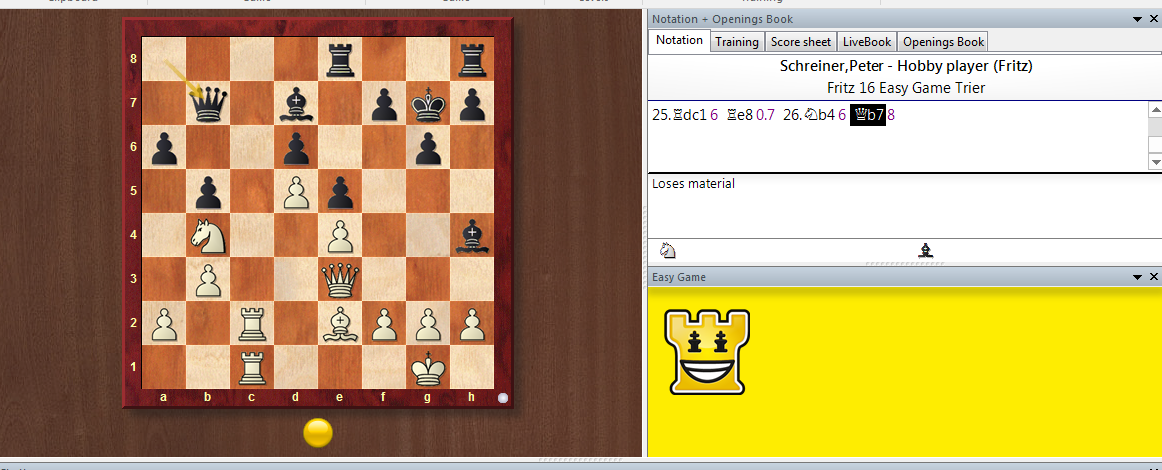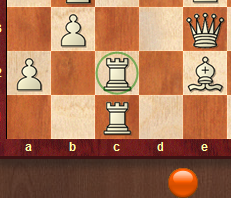|
Easy Game |

|

|
|
|
Easy Game |

|

|
Easy Game
In the early days of computer chess it was an exciting experience for a human player to play against a computer. The programs were very strong tactically, but could be defeated by experienced club players. In play against modern chess engines this is something which has consistently been changing and even for top players it is hard to defeat modern engines.
In earlier versions of the program there were different handicap, friend and sparring settings in order to provide the user with an opponent capable of being beaten by a human being.
From the starting screen of Fritz 16 you can set in motion all levels of play in which the engine’s playing strength is reduced under " Easy Game "

On doing so, you launch the customised screen for this type of play. Experienced users will spot at first glance that what are offered above all are functions which are linked to this playing mode.

As a first step it is necessary to define the level at which one would like to play games against the program. This can be done under the heading “Levels”.

For most users the setting “Club player” should be suitable. In your first games against the computer it will quickly become evident what the correct setting should be. After the appropriate level of play has been chosen, you can start a game directly by clicking on “New Game White” or “New Game Black”.

Now you can input your moves totally without time pressure (no time limit). The program adapts within the framework of the chosen level of play and on occasion plays weaker moves.

In the window “Easy Game Info” you will find a constantly updated evaluation of the position and your rating.
During the game the program offers its human opponent numerous little opportunities for help. The functions “Hint”, j‘adoube, etc. are very useful.
In addition there is the possibility of continuing the game without seeing the pieces. To achieve this you simply click on the ribbon on “Play blindfold”.
Something totally new in Fritz 16 is the support for training by means of “Assisted Analysis” and calculation training.
In our opinion the playing mode “Easy Game” offers the advantage that, for example, when the level has been chosen to be that of “Club player” the program generally speaking plays strong and natural moves, but every so often blends in tactically weaker moves.
If in that playing mode you are aiming for sharp types of position of a tactical character, the program will more and more frequently present you with the opportunity to exploit these to your advantage. As soon as a tactical opportunity is there for the human player to seize, the program announces this to the user and displays a hint to this effect in the information window.

During the course of a game, there is at all points the option to change the playing level. After a few moves, the program will adjust the estimated rating in the information window.
Positions offering help
In addition to all that, the program also offers a little help at some positions during the game. Via “Hint” it gives short tips about the best continuation.
But there is an even more elegant method. Simply by rolling your finger over the mouse wheel you can be shown the piece which can make the best move in the actual position on the board. The relevant piece is highlighted on the board by being framed in green.

In combination with Assisted Analysis you can also get a little help, but this time it calls for independent thinking on the part of the user.
You will find a little bar to the right of the board.
With the easier levels, e.g. Hobby player, the opportunities which are offered occur more often and attention is drawn to them by a blinking symbol below the chess board and this gives a clear hint that in the position there is a move you can make which will be to your advantage.
What is particularly nice is the display of the facial expression of the piece in the “Easy Game Info” window. Just like in a game with a human opponent, the user can spot how the program evaluates the position on the board from the facial expression.